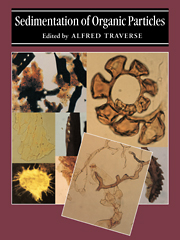Book contents
- Frontmatter
- Contents
- Editor's preface
- List of contributors
- I Introduction
- II Studies of palynosedimentation in modern environments
- III Reconstruction of late Cenozoic vegetation and sedimentary environments from palynological data
- 13 Quaternary terrestrial sediments and spatial scale: the limits to interpretation
- 14 Pollen and spores in Quaternary lake sediments as sensors of vegetation composition: theoretical models and empirical evidence
- 15 Paleoecological interpretation of the Trail Ridge sequence, and related deposits in Georgia and Florida, based on pollen sedimentation and clastic sedimentology
- IV Application of data on palynosedimentation to solution of geological problems
- V Appendix
- Index
13 - Quaternary terrestrial sediments and spatial scale: the limits to interpretation
Published online by Cambridge University Press: 06 January 2010
- Frontmatter
- Contents
- Editor's preface
- List of contributors
- I Introduction
- II Studies of palynosedimentation in modern environments
- III Reconstruction of late Cenozoic vegetation and sedimentary environments from palynological data
- 13 Quaternary terrestrial sediments and spatial scale: the limits to interpretation
- 14 Pollen and spores in Quaternary lake sediments as sensors of vegetation composition: theoretical models and empirical evidence
- 15 Paleoecological interpretation of the Trail Ridge sequence, and related deposits in Georgia and Florida, based on pollen sedimentation and clastic sedimentology
- IV Application of data on palynosedimentation to solution of geological problems
- V Appendix
- Index
Summary
Introduction
The Quaternary Period can serve as a model for earlier times in demonstrating the diversity of data that can be analyzed to reveal the nature of past biota and environments. Late Quaternary palynomorphs are a particularly versatile and informative group of fossils because they are preserved in a variety of deposits, and in most cases can be referred to existing genera. Pollen can be used to infer past climates, to reconstruct former vegetation, and to provide an environmental framework for archaeological investigations, amongst other applications. The characteristics of pollen production, dispersal, deposition and preservation at each site dictate the type of application to which the individual site is suited, and determine the detail and reliability of the inferred reconstructions. In this chapter I explore some of the methodologies of environmental and community reconstruction that exploit particular dispersal and sedimentation properties of pollen grains. These same properties impose the limits for the level of detail that can be justified in the final interpretation.
The concept of a source area of pollen origin for each collecting basin is introduced by Jackson in Chapter 14 (this volume). This source area, which is controlled by the method of pollen dispersal, dictates the type of reconstruction that can be created from any given site. The size of these source areas has been investigated both theoretically and empirically. Tauber (1965) began from first principles by using the physical laws governing the dispersion of small particles. Studies of pollen dispersal from isolated trees or small, discrete stands developed this approach (e.g. Turner 1964; Janssen 1984), and Kabailiene (1969) presented a sophisticated algebraic analysis of pollen dispersal over an entire landscape.
- Type
- Chapter
- Information
- Sedimentation of Organic Particles , pp. 239 - 252Publisher: Cambridge University PressPrint publication year: 1994
- 3
- Cited by



